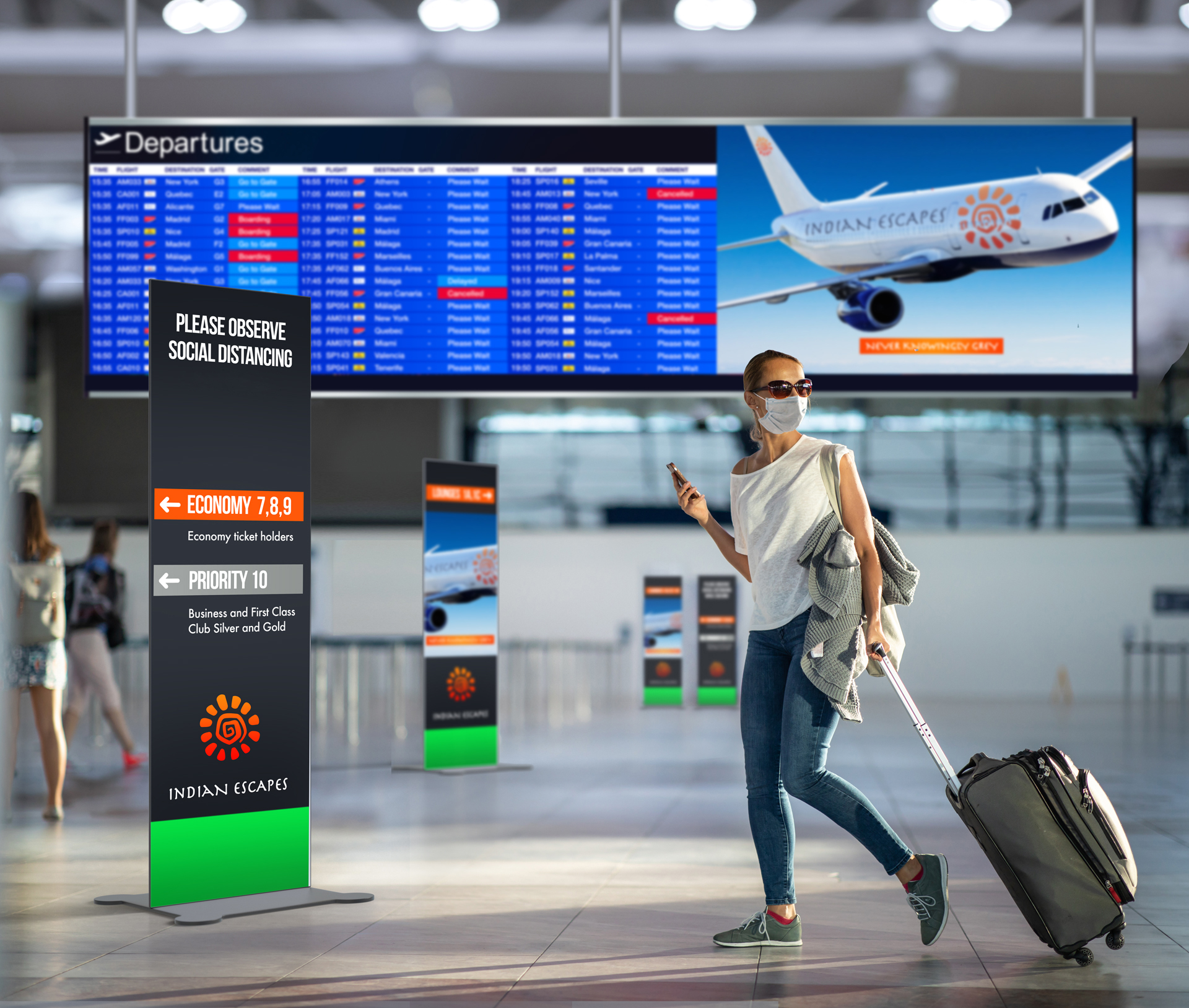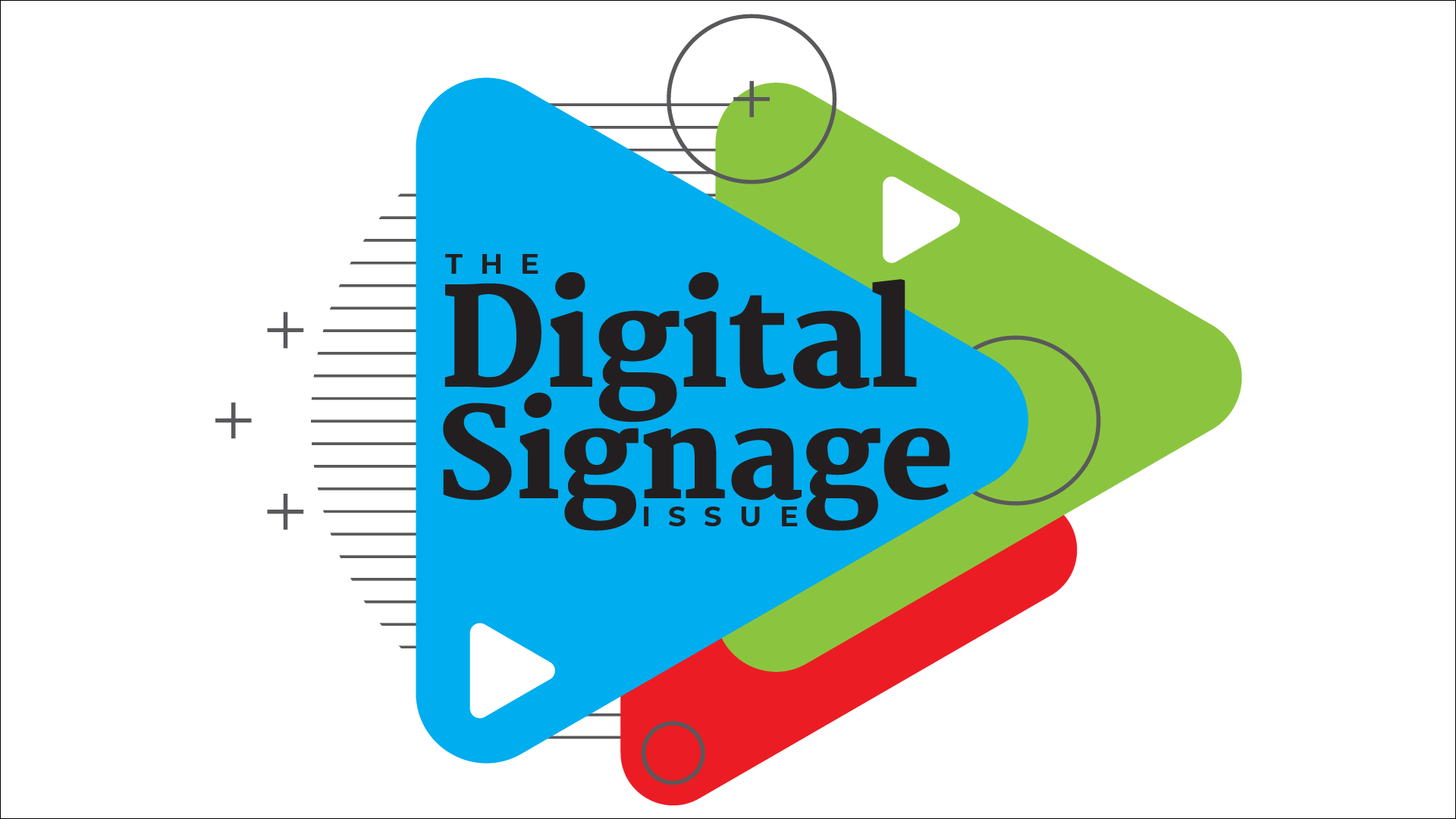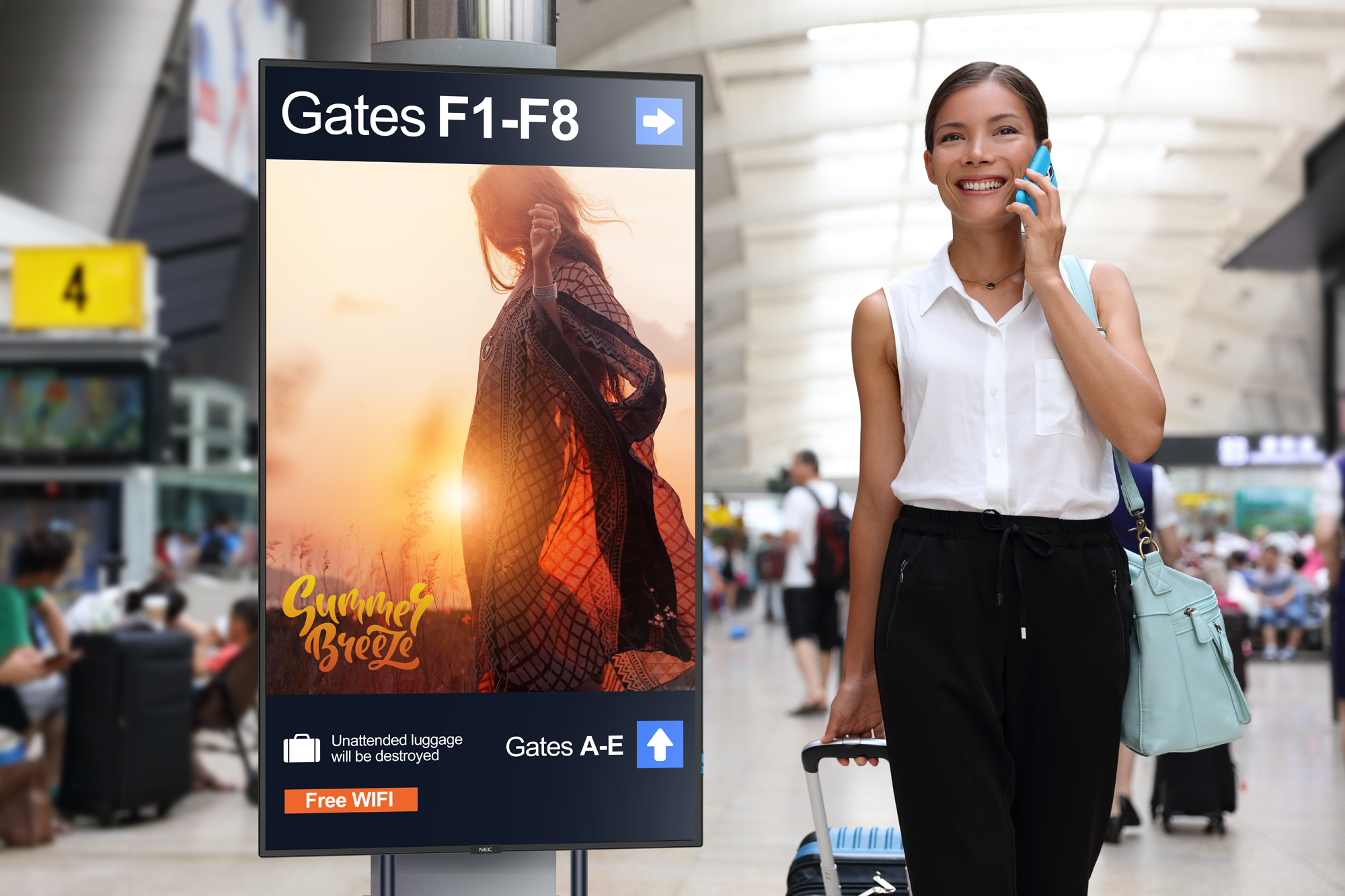Digital Signage on the Go
Transportation hubs are capturing traveler attention with engaging displays.

Once considered a novelty, digital signage in airports, bus stations, and rail terminals have become an essential source of guidance, information, and entertainment for the travelers who use them. These systems have also become valuable promotional platforms and advertising revenue streams for the transportation hubs that host them, as well as a profitable sales opportunity for systems contractors and AV manufacturers who respond to the latest market trends.
[Maximize Digital Signage with Content Planning, Management]
What are transportation hubs seeking that can help drive sales in this area? “Clients want commercial-grade, bright digital signage displays that can be used for COVID messaging, wayfinding, emergency announcements, and people counting,” said Ben Hardy, product manager for Sharp NEC Display Solutions. “Clients are also looking for accessibility to these displays via network connectivity to ensure that the displays are on and working properly.”
Advanced Imagery
Transportation hubs also want the visually appealing digital signage to engage passersby and keep them watching longer. “LED displays are all the rage,” explained Michael Callahan, product marketing manager for RGB Spectrum. “So are new hybrid video processors with higher bandwidth Gen 3 backplanes that provide ultra-high performance video and data processing at 4K 60p, plus full support for AV-over-IP content, and dynamic multi-window, multi-image display capabilities.”

The very best visuals are key to attracting the eyeballs of transportation hub users, noted John Garmendi, senior manager of sales support engineering and consultant relations for Sony. “This fact is driving an increased adoption of direct view LED video walls in these locations as a way of creating spectacular branding opportunities,” he said. “Advanced video display adoption is really elevating what was a utilitarian environment into an attraction.”
Behind the visuals, however, is a system that drives the content. “In a typical transportation hub digital signage system, there is a PC running one or multiple display ‘banks’ that provides content to each of these screens,” said Hardy. “This PC is controlled via a network connection to a central hub and separate network connections, usually via a switch, that go directly into each display for monitoring/controlling the units.”
A daily selection of the top stories for AV integrators, resellers and consultants. Sign up below.
“The behind-the-scenes infrastructure for a digital signage network is the content management server and Ethernet network,” Farkas added. “The content management server manages your content, provides workflows, approval processes, manages players, and so forth. It’s the brains of the network.”
Everything for Everyone
As the annual public obsession with Super Bowl commercials proves, people will gladly sit through all kinds of content as long as it is interesting, innovative, and enjoyable to watch. This is why the most successful transportation hub digital signage offers content that people want to see, with standards of production and playout that rival those of network/streaming TV.
[Digital Signage: The Future Is Bright]
“Travelers expect the same or better user experience from digital signage as they get from their favorite mobile app,” said Eric Farkas, product manager, Black Box. “But that’s not all: The current trend is for a more personalized viewing experience that is also quite detailed. Travel information, weather conditions, capacity information, safety policies, maps and wayfinding, contact information, club or member-only facilities information, nearby venue information, nearby hotel/shuttle information, ride app pickup points and other ground transportation options, Wi-Fi information, and food/shopping information are standard wants from travelers of all experience types.”

In meeting mulitple user demands, Garmendi said the transportation hub digital signage is “morphing into a hybrid content environment, where travel information is really being blended with retail and entertainment. There's also an increase in the utilization of IoT [Internet of Things] technology to meet travelers’ demands for more personalized experiences.”
[Digital Signage Wins Big at Route 66 Casino]
A word of caution: No matter how compelling the content mix, transportation hub digital signage systems need to “go easy” on the ads to keep people watching, Callahan said. What advertising there is needs to “be relevant and resonate with the customers within that location in order to succeed,” Garmendi added.
“Advanced video display adoption is really elevating what was a utilitarian environment into an attraction.”
John Garmendi, Sony
This same care should be applied when inserting COVID-19 content into the mix. “COVID messaging for social distancing and mask protocols, wayfinding, and announcements should be intertwined with the critical information that needs to be passed along to customers with regards to flight/bus/train statuses and other changes that could disrupt their travel,” Hardy said. “If possible, content distribution can be re-imagined so that one existing display in each ‘bank' can be allocated for PPE or COVID messaging or advertising, while the rest of the displays are used for other informational signage. This approach allows for all pertinent information to be shared simultaneously.”
Writing Successful Bids
From time to time, transportation hubs solicit bids for upgrades to their existing digital signage systems or for new systems altogether. Before preparing bids for these prospects, systems contractors need to ask a wide range of questions—because the answers will maximize the chances of their bids being accepted and delivering the desired results.
“I typically start with the application,” said Farkas. “I ask the prospect, ‘What do you want your customers to see, interact with, or do with the digital signage system?’ Accomplishing this goal for them should be the top priority in any bid.”
Farkas then considers the proposed digital signage system’s power and infrastructure needs. “This seems like a small detail until you realize you need hundreds of plugs and network drops installed before your digital signage can go live,” he said. “Next, and this may sound ridiculous, some digital signage vendors will help you design your system, but they don’t sell displays and mounts. These are often expensive items that are left off of the Bill of Materials and outside the budget.”
“Travelers expect the same or better user experience from digital signage as they get from their favorite mobile app.”
Eric Farkas, Black Box
Given the complexity of modern digital signage systems, Farkas is not a fan of in-house installations. “I tell clients to use a recommended integrator,” he explained. “Hanging displays might sound simple, but it can be more complicated than you realize. You not only want your displays to look good and stay attached, but you want them to function properly and be placed where consumers can use and view them.”
To ensure client satisfaction after the installation is done, Farkas quizzes them about their “content plan” beforehand, namely the visuals that the transportation hub intends to run on their digital signage system. “Who is designing it? Where is it coming from? Are you selling space on your signage to others?” he said. “Without a content plan, you could end up with displays that have stale content that people won’t watch.”
Finally, Farkas asks the client how they intend to properly manage the completed system over time. “Monitoring and maintenance should be a consideration if you have remote sites with limited to no staff,” he noted. “Who is going to report a screen outage if you have no monitoring?”
James Careless is an award-winning freelance journalist with extensive experience in audio-visual equipment, AV system design, and AV integration. His credits include numerous articles for Systems Contractor News, AV Technology, Radio World, and TV Tech, among others. Careless comes from a broadcasting background, with credits at CBC Radio, NPR, and NBC News. He currently co-produces/co-hosts the CDR Radio podcast, which covers the Canadian defense industry. Careless is a two-time winner of the PBI Media Award for Excellence.

